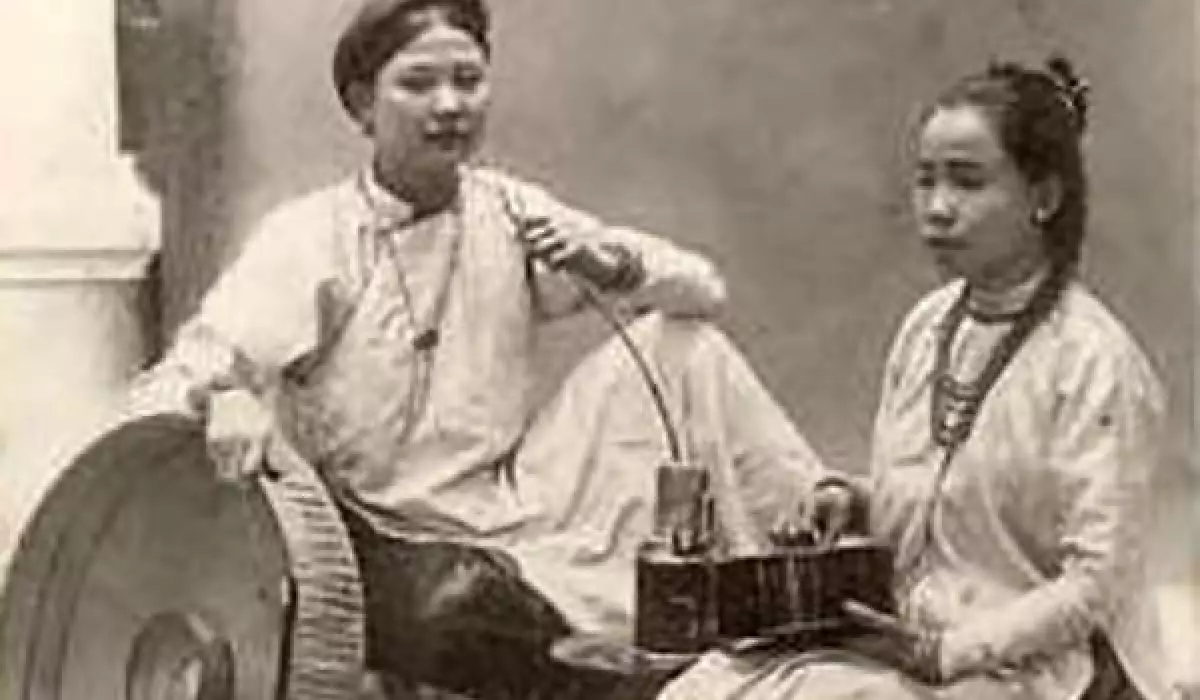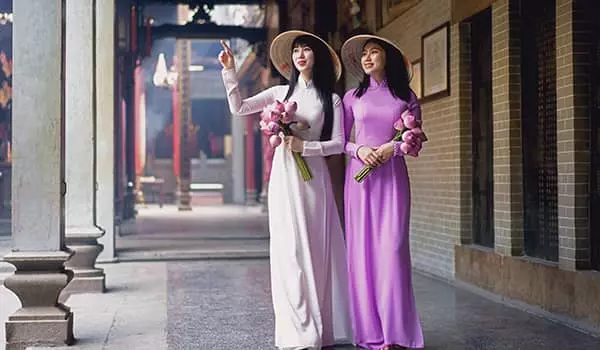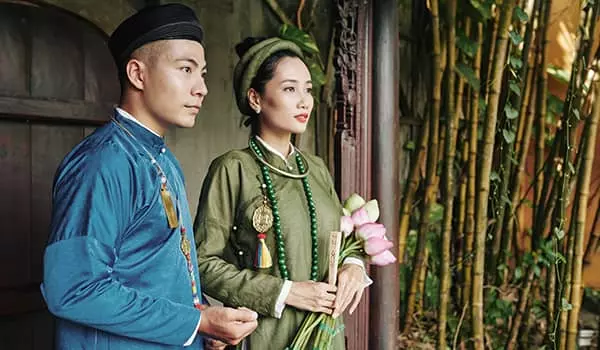 Caption: Ao Ngu Than
Caption: Ao Ngu Than
Vietnam, the land of sensual beauty and elegance, is best represented by the flowing silk ao dai. This national dress has a history of nearly 300 years and has undergone significant changes to become the modern version we see today. The ao dai is a long, form-fitting tunic with side slits worn over thin white trousers, exuding a sense of feminine allure.
A Brief History of the Ao Dai
Cham Ao Dai of the South
In the 18th century, the ruler of southern Vietnam, Nguyen Phuc Khoat, introduced the loose-fitting, front-buttoned gown and trousers known as the cham ao dai. This attire drew influences, such as colors and patterns, from the traditional clothing of the native Cham people.
Ao Tu Than and Ao Ngu Than of the North
Simultaneously, in northern Vietnam, two styles of dress emerged. The working-class women wore the 4-part ao tu than, consisting of a loose outer tunic, long skirt, an undergarment shirt, and a cloth sash tied around the waist. On the other hand, high society women sported the 5-part ao ngu than, characterized by a closed front, raised collar, and brighter colors. These styles introduced elements like hanging flaps and side slits that would be adapted into the modern ao dai.
 Caption: Young Vietnamese women wearing traditional Ao Dai
Caption: Young Vietnamese women wearing traditional Ao Dai
The Modern Ao Dai
1930s
In the 1930s, Hanoian fashion designer Nguyen Cat Tuong played a significant role in shaping the modern ao dai. He combined elements from the southern ao dai, northern ao ngu than, and French haute couture. Tuong's sleeker and form-fitting design accentuated the wearer's curves, but it was considered too provocative for its time and lost popularity after a few years.
Late 1950s-1960s
Fortunately, the ao dai made a resurgence in the late 1950s and 1960s, thanks to tailors from Saigon. These designers, led by Dung from Da Kao district, introduced enhancements such as straight, raglan sleeves and diagonal seams, which improved mobility and minimized wrinkles. The ao dai gained global attention in the 1960s when the wives of high-ranking officials, including Madame Nhu, captured the western media's attention with their low-cut, collarless ao dai.
Late 1980s to Present Day
After a period of decline, the ao dai regained popularity in the late 1980s and 1990s when Miss Ao Dai beauty pageants were held. The Vietnamese contestant in the 1995 Miss International Pageant received the Best National Costume award for her ao dai, further cementing its significance. Today, the ao dai is not only reserved for special occasions but can also be seen worn daily by school teachers, bank tellers, and those in civil or hospitality-related positions.
 Caption: Wedding ao dai
Caption: Wedding ao dai
Getting Your Own Custom-Made Ao Dai in Vietnam
As the world becomes more captivated by the ao dai, tourists visiting Vietnam are increasingly adding this unique garment to their bucket list. However, the ao dai cannot be bought off the rack due to its characteristic tight fit. It requires custom tailoring. Fortunately, there are abundant foreigner-friendly tailors in Hanoi, Saigon (Ho Chi Minh City), and Hoi An. Among these cities, Hoi An stands out with its rich history in the silk trade, competitive prices, fast turnaround times, and high-quality workmanship.
If you find yourself on one of Heritage Line's lower Mekong River cruises between Saigon and Cambodia, make sure to visit the Bao Tang Ao Dai Museum. This museum offers an insightful look into the history of the ao dai, the sewing process, and exhibits approximately 150 pieces from different time periods.
The ao dai remains an emblem of Vietnam's femininity and grace, captivating hearts both at home and abroad. So, why not embrace the allure of ao dai and immerse yourself in the rich cultural heritage of Vietnam?


















